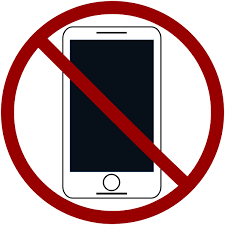Cellphones have become one of the biggest topics educators and school professionals talk about. More and more students are using their cellphones instead of paying attention and doing their work. While this issue needs to change, some people have suggested extreme ideas to solve this issue. Tim Daly, CEO of EdNavigator, a nonprofit organization focused on bettering the education system for students, reported in an Education Gadfly article that France and China have forbidden use of cellphones for students during the day, and the U.K. is considering joining the bandwagon. As more and more places are considering this ban, the new question is should Stamford High join this trend and intensify the cellphone use policy?
While there are some valid reasons for this ban, the solutions will not come from banning cellphones. One reason is socialization. People still socialize even with phones being a thing. Phones actually help people ease into socializing by befriending other students through social media, then being more social in school. What adults don’t understand is that socializing can be easier online. Social anxiety is a thing, and it’s not caused by cellphones, but cellphones are a tool that can help with that. As someone with social anxiety, I know that it is easier to talk to people online than in person, and it’s easier to make friends this way. If cellphones were banned, there would be more students that are alone because it is harder to make friends.
Another reason for this ban given by Daly is that students find ways around it. It is understandable that students will have the human nature to use their phones if someone makes a rule saying they can’t use them. A better way is having breaks in between classes for cellphone use. Since a class here is 88 minutes long, a break is needed for stress relief, and reducing the risk of burnout. A study showed that 97% of students were on their phones for an average of 43 minutes in a school day. Compared to a 7-hour school day, including a lunch break around 25 minutes long, that is not a lot of time.
The article claims that adults advocating the opposite position had no arguments worth sharing, but there are numerous arguments to be made. There were three levels given for fixing the use of phone use, and there are valid rebuttals to be made for each level.
The first level is leaving phones at home. This idea is terrible for many reasons. There are many students who don’t go straight home after school. This includes after school activities, working, and hanging out with friends. Cellphones are a part of modern day technology, and they have become a necessity. This doesn’t have to do with phone addiction, it simply has to do with the way the world has evolved. It is important for parents to know where their children are. How will they know without cellphones? If a student misses their bus, how can they contact anyone to figure out a way home? Many students take Uber or other forms of rideshare to leave school. This won’t be possible if students leave their phones at home. While the reason for this idea is valid, there are many cons to this plan.
The second level is not allowing cellphone use, including during bathroom breaks, passing time, and lunch. With the open campus policy, students are allowed to leave to get food during lunch. Many students order ahead on their phones to be able to make it back to class in time, and this would not be possible if cellphone use was banned during the day. This would cause students to be late to classes because of the wait time. Minga is the app students use to have passes for parts of the school. If phone use is banned, this would not work. Many students who choose to be alone like to use their phones during lunch, but with a phone ban, this won’t be possible. Not everyone likes to socialize, and no one should be forced to socialize if they do not want to.
The third and final level is no cellphone use during classes. Some teachers already have this rule implemented, but there are always a few students who don’t follow this rule. With this rule, phones should be out of sight the entire period, unless taking their phone out to make a pass. This solution is the best out of the three, but it still may not work.
Daly suggests a four-part strategy for disciplining students who don’t follow the rules. While some of these strategies are actually good ideas, some aren’t. For example, suggesting requiring parents to pick up phones from school. Not every student has a parent that could come to the school and do that. Many adults do not drive, many adults work long hours. Taking away a necessity like cellphones is inhumane. Daly says “Teachers can’t ignore bullying or physical violence”. This is absolutely inaccurate. Bullying and physical violence at school are constantly ignored. There are so many incidents when students are clearly being bullied, yet not much is done because people seem to believe at this age, everyone can handle themselves when it comes to bullies. This isn’t the case for everyone, and teachers should still do their part to prevent bullying. Daly suggests ensuring classrooms are comfortable environments where students can focus on “things worth doing”. Not everything that is done on a phone isn’t worth doing. For example, there are many brain games that students play before classes. While social media is popular, there are many people at this age who play brain games, or other engaging games. If students should be preparing for the real world, they should be able to use their phones, because everything is digital nowadays.
Giving punishments for cellphone use during class when a teacher is teaching or when students should be working will best limit cellphone use. For example, taking away participation points when a student is using their phone while they shouldn’t be. Students will put their phones away when they realize their grade depends on it.
Daly’s argument toward cellphones is very contradictory, and will not solve the problem. It will worsen it and cause more students to disengage from school, which is the problem Daly is trying to solve. There should be another solution made that will truly benefit all parties involved: students, parents, teachers and school staff.




